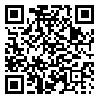Volume 8, Issue 1 (5-2021)
Journal of Spatial Analysis Environmental Hazards 2021, 8(1): 189-214 |
Back to browse issues page
Download citation:
BibTeX | RIS | EndNote | Medlars | ProCite | Reference Manager | RefWorks
Send citation to:



BibTeX | RIS | EndNote | Medlars | ProCite | Reference Manager | RefWorks
Send citation to:
soleimani mehranjani M, movahhed A, zanganeh A, ahmadi Z. Explain the Processes of Modernization on the Spatial Mismatch in Urban Neighborhoods (The case of, Region 4 of Tehran Municipality). Journal of Spatial Analysis Environmental Hazards 2021; 8 (1) :189-214
URL: http://jsaeh.khu.ac.ir/article-1-3165-en.html
URL: http://jsaeh.khu.ac.ir/article-1-3165-en.html
1- in Faculty of Geographical Sciences, Kharazmi University , m_soleimani_mehr@yahoo.com
2- in Faculty of Geographical Sciences, Kharazmi University
2- in Faculty of Geographical Sciences, Kharazmi University
Abstract: (7442 Views)
Explain the Processes of Modernization on the Spatial Mismatch in Urban Neighborhoods
(The case of, Region 4 of Tehran Municipality)
Modernization processes and modern urban planning policies have had significant effects and consequences on the spatial transforms of cities in the world and Iran. Among that processes, we can mention the growing gap between social groups and urban spaces based on a number of contexts and mechanisms that, from the late 1960s onwards, have been conceptualized and measured experimentally under what is called the “spatial mismatch hypothesis”. The basic methodology for estimating the state of spatial mismatch in cities or urban regions is based on the logic of “spatial segregation” between social groups and land uses simultaneously; Because based on the spatial mismatch hypothesis, it is not possible to explain the segregation mechanisms between social groups in the city without considering its relation with segregation mechanisms in urban spaces or land uses, and vice versa. Based on such methodological logic, the present paper has assessed the state of spatial (mis)match in Region 4 of Tehran Municipality. The method of data collection was in the form of libraries and data available in the Statistics Center (General Census of Population and Housing in 2016 and at the level of demographic blocks of the region), Road and Urban Development Organization, Municipality of Region 4. Variables used to analyze the spatial mismatch in the region
The level of education, employment in study abroad and inside the country, employment and unemployment status, level of housing infrastructure, type of housing ownership, changes in land use pattern and the amount of daily commutes in the study area.
Findings obtained based on the defined variables and techniques used in Segragation Analyzer and ArcGIS software show that the state of spatial mismatch in this urban region (like many other cases in cities around the world) is high, but its intensity is higher in terms of job and literacy of social groups in relation to the state of activity and residential land uses. Relying on such findings, some strategies and policies have been proposed to reduce the state of spatial mismatch in Region 4, and to contribute to a more even and equitable distribution of development in this region and hence reduce poverty among the lower classes.
Keyword:
Urban modernization, spatial mismatch hypothesis, socio-spatial segregation, Region 4 of Tehran Municipality
(The case of, Region 4 of Tehran Municipality)
Modernization processes and modern urban planning policies have had significant effects and consequences on the spatial transforms of cities in the world and Iran. Among that processes, we can mention the growing gap between social groups and urban spaces based on a number of contexts and mechanisms that, from the late 1960s onwards, have been conceptualized and measured experimentally under what is called the “spatial mismatch hypothesis”. The basic methodology for estimating the state of spatial mismatch in cities or urban regions is based on the logic of “spatial segregation” between social groups and land uses simultaneously; Because based on the spatial mismatch hypothesis, it is not possible to explain the segregation mechanisms between social groups in the city without considering its relation with segregation mechanisms in urban spaces or land uses, and vice versa. Based on such methodological logic, the present paper has assessed the state of spatial (mis)match in Region 4 of Tehran Municipality. The method of data collection was in the form of libraries and data available in the Statistics Center (General Census of Population and Housing in 2016 and at the level of demographic blocks of the region), Road and Urban Development Organization, Municipality of Region 4. Variables used to analyze the spatial mismatch in the region
The level of education, employment in study abroad and inside the country, employment and unemployment status, level of housing infrastructure, type of housing ownership, changes in land use pattern and the amount of daily commutes in the study area.
Findings obtained based on the defined variables and techniques used in Segragation Analyzer and ArcGIS software show that the state of spatial mismatch in this urban region (like many other cases in cities around the world) is high, but its intensity is higher in terms of job and literacy of social groups in relation to the state of activity and residential land uses. Relying on such findings, some strategies and policies have been proposed to reduce the state of spatial mismatch in Region 4, and to contribute to a more even and equitable distribution of development in this region and hence reduce poverty among the lower classes.
Keyword:
Urban modernization, spatial mismatch hypothesis, socio-spatial segregation, Region 4 of Tehran Municipality
Keywords: Urban modernization, spatial mismatch hypothesis, socio-spatial segregation, Region 4 of Tehran Municipality.
Type of Study: Applicable |
Subject:
Special
Received: 2020/09/16 | Accepted: 2020/10/10 | Published: 2021/07/5
Received: 2020/09/16 | Accepted: 2020/10/10 | Published: 2021/07/5
Send email to the article author
| Rights and permissions | |
 | This work is licensed under a Creative Commons Attribution-NonCommercial 4.0 International License. |






